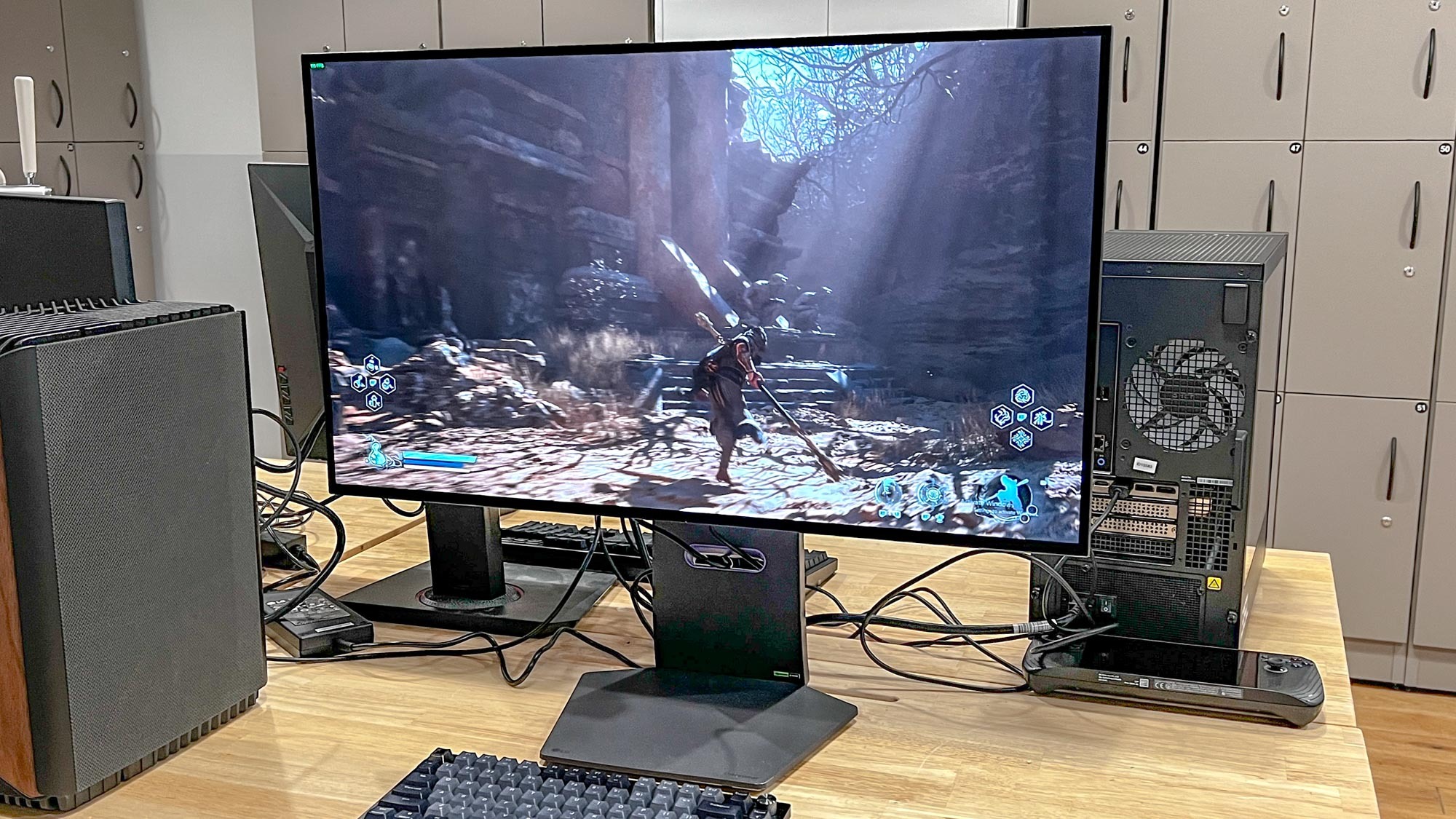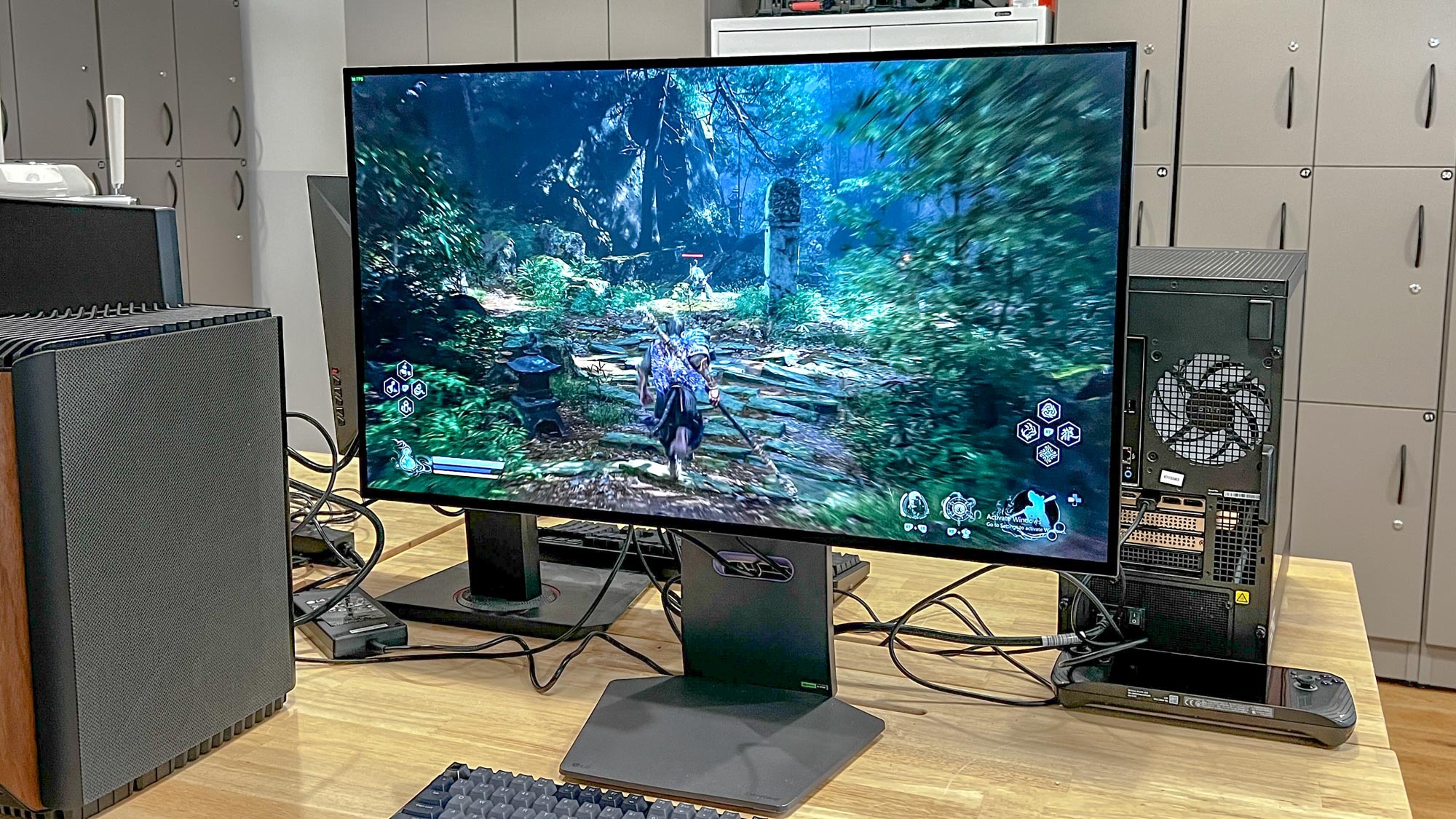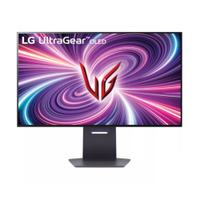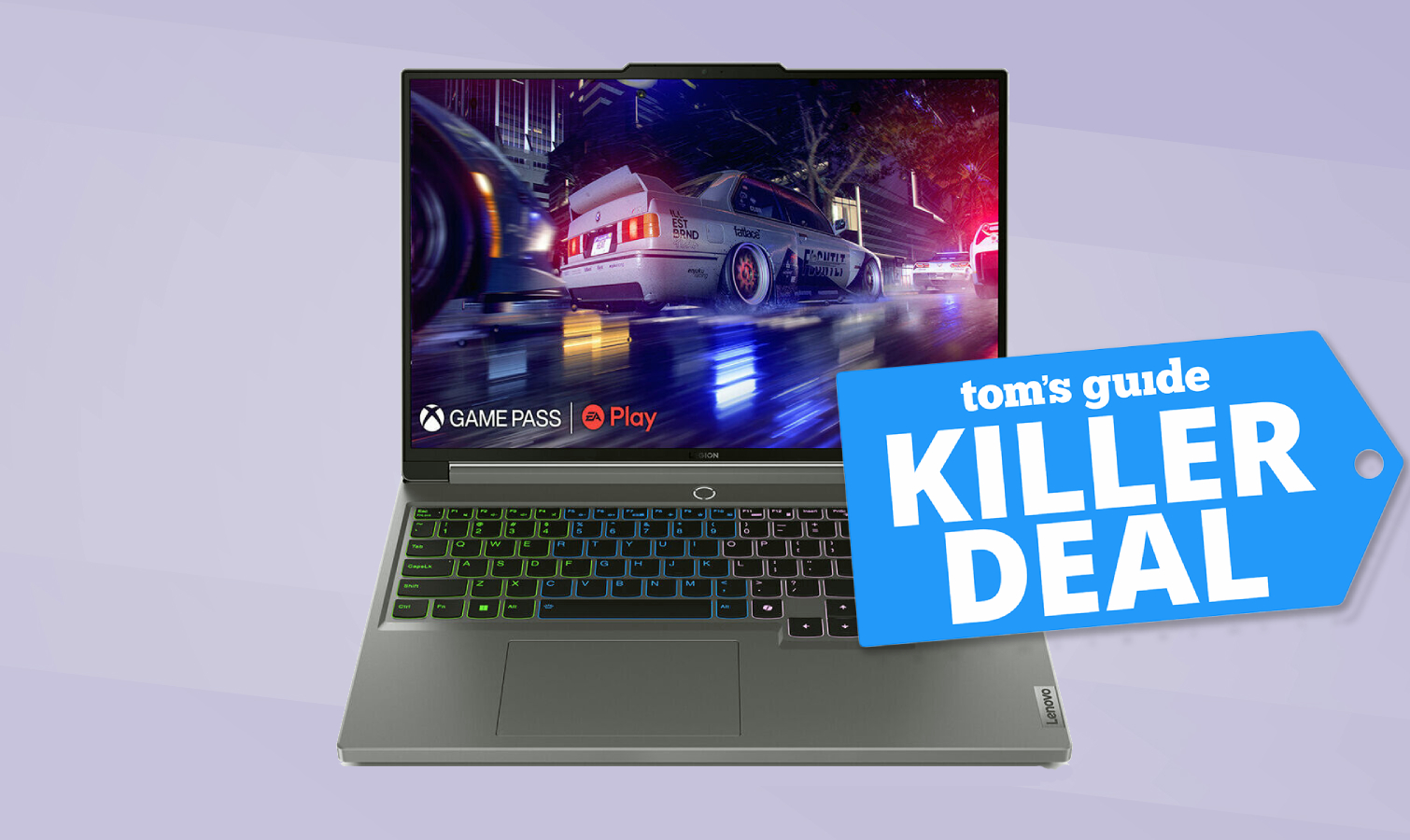This OLED gaming monitor has one of the coolest features I’ve ever seen
This is a literal game-changer

I review gaming monitors for a living but it’s not always easy to distinguish one from another. That’s because, for the most part, gaming monitors have similar features, such as high refresh rates, fast response times and perhaps some RGB lighting for good measure. Because of that, I don’t expect any surprises when reviewing the best gaming monitors.
You can imagine my shock when I received a test unit for something truly unique. Right now, I’m testing the LG UltraGear 32GS95UE-B OLED gaming monitor. Like the LG UltraGear 45GR75DC, this 32-inch monitor also delivers smooth performance and an immersive viewing experience. However, it has one feature that makes it stand out from the competition.
What is this unique feature and why should other gaming monitors have it? Read on to find out.
LG UltraGear 32GS95UE-B: was $1,399 now $1,199 @ LG
The LG UltraGear 32GS95UE-B stands out from other gaming monitors thanks to its dual refresh rate feature that lets you switch from 4K at 240Hz and 1080p at 480Hz with the press of a button. On top of that, it has a vivid OLED panel and an elegant design. It's currently on sale for $200 off on LG's online store.
Dual refresh rate is a game-changer
On its own, the LG UltraGear 32GS95UE-B is a fantastic gaming monitor. Its 32-inch OLED display delivers stunning visuals that help draw you into whatever game you’re playing. The monitor is also easy to set up and doesn’t take up much space on a desk. I also like its low-key design which helps it feel at home in your gaming den or home office.
So what makes the LG UltraGear 32GS95UE-B so special? It’s one of the few gaming monitors that lets you switch refresh rates with the press of a button.

Specifically, the 32GS95UE-B can swap between 4K at 240Hz and 1080p at 480Hz. As LG explained to me when I first checked out the monitor, the former mode is meant for “cinematic” games like Marvel's Spider-Man or Elden Ring where you’d want the best visual fidelity possible, while the latter is best for competitive gaming where you need to maximize performance to gain an edge. Both modes have a super low 0.03ms response time, so you shouldn’t notice input lag.
I’m not a competitive gamer but even I can feel the difference between the two refresh rates. For instance, Doom Eternal feels smoother and more precise in 480Hz mode compared to 240Hz. Granted, I can’t get the game to run at 480 frames per second to match the refresh rate, but the game runs smoother regardless. I can see how a dedicated first-person shooter player would benefit from this setting.
Conversely, a game like Black Myth: Wukong is perfect for 4K at 240Hz. The game’s dense forests and arid deserts look drop-dead gorgeous at that resolution. The "lower" 240Hz refresh rate also suits this action RPG well.
I’m sure you’re wondering about the visual quality of games running at 1080p on a 32-inch display. While you’ll notice a visual downgrade when switching between 4K to 1080p, the latter doesn’t look terrible. Because of the screen’s size, it’s still easy to see minute details in the environments — which is useful if you’re playing competitively. I’m more partial to 4K (naturally), but 1080p for competitive gaming works well enough.
Outlook
A dual refresh rate on gaming monitors is such a useful feature that I’m surprised it’s just now gaining some traction. The Asus ROG Strix XG27UCG is the only other monitor I can think of with such a feature. Hopefully, we’ll see more manufacturers jump on this bandwagon. Perhaps it could even become ubiquitous if there’s enough demand.
My full review of the LG UltraGear 32GS95UE-B is coming soon, so stay tuned for more!
More from Tom's Guide
Sign up to get the BEST of Tom's Guide direct to your inbox.
Get instant access to breaking news, the hottest reviews, great deals and helpful tips.

Tony is a computing writer at Tom’s Guide covering laptops, tablets, Windows, and iOS. During his off-hours, Tony enjoys reading comic books, playing video games, reading speculative fiction novels, and spending too much time on X/Twitter. His non-nerdy pursuits involve attending Hard Rock/Heavy Metal concerts and going to NYC bars with friends and colleagues. His work has appeared in publications such as Laptop Mag, PC Mag, and various independent gaming sites.


